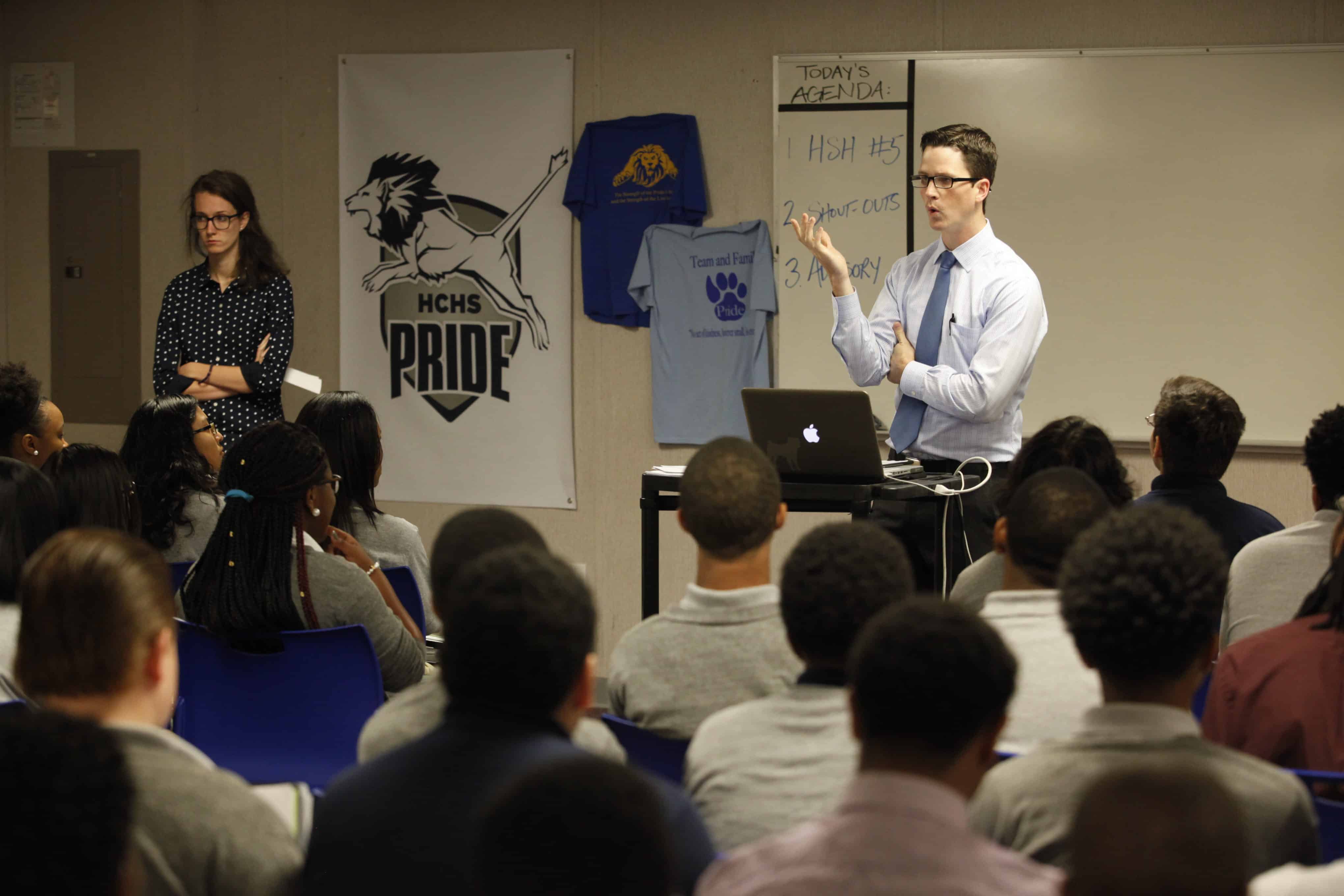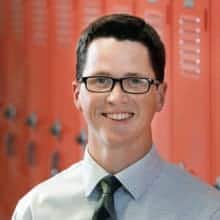Teaching, at its best, is the most noble of all professions. While all teachers aren’t made of the same stuff as Jaime Escalante, I’d bet the proverbial farm that you still remember the name of that one teacher who ignited your curiosities, inspired your passions, or quite literally changed your entire life’s trajectory. It is in the wake of teaching — be it good or bad — that all of the world’s events unfold.
Teachers operate today in a turbulent world of limited resources, soaring expectations, and enough pressure to turn coal into diamonds. While politicians preach about their education platforms and the Common Core without knowing the first thing about either of them, teachers are carefully caring for our nation’s most precious commodities. It is their privilege to spend their days with the future: shaping minds, interrogating history, and building character. Most return home weary each day, exhausted in the service of our children, laboring for the soul of our nation. Then they grade papers until they pass out in front of the television, a half-eaten meal before them on the coffee table.
Their task is daunting. Students from low-income communities are roughly three years behind their more affluent peers in reading, with about half at risk of not completing high school. African Americans, American Indians, and Latinos are disproportionately affected by the culture of poverty and are statistically more likely to drop out than white students. High school dropouts create an economic vacuum by earning less over their lifetime, which amounts to billions of dollars lost each year in unrealized tax revenue. Add the fact that dropouts are more likely to receive government assistance in the form of welfare, food stamps, or Medicaid, and you’ve got yourself a two-pronged national crisis of education and economics. The third prong is criminal in nature: in all of the American prisons and correctional facilities, approximately 70 percent of the inmates are high school dropouts. All told, the American taxpayers spend over $300 billion each year on high school dropouts.
Upon closer inspection, you’ll find that there is a substantial achievement gap dividing students of affluent communities, which are disproportionately white, and students living in low-income communities, which are disproportionately minority. While the term “achievement gap” has evolved into a tired buzzword used by policy wonks and superficial educators, the truth is the achievement gap is really an opportunity gap in which minority students and students in poverty-stricken communities are expected to do more with less. You can get a slap-in-the-face idea for the gap by simply walking through a public school in Chapel Hill, North Carolina, and then touring a comparable school in neighboring Henderson, Tarboro, Weldon, or Windsor. Then you will see it. Then you will feel it. The haves and the have-nots. The affluent boosterism, with its abundance of volunteers and donor checks, juxtaposed against schools that don’t have classroom maps that reflect the dissolution of the Soviet Union. The difference is tangible. The gap is wide.
The opportunity gap is a ubiquitous predator. It has penetrated every state in the union and preys mostly on children of color. It is a national affliction that has lingered as a residual symptom of two and a half centuries of slavery and a century of Jim Crow, and has remained stubbornly intact despite the billions of dollars we throw at it each year. Per student, the United States spends more money than most industrialized nations, yet in the Program for International Student Assessment, which measures student performance from over sixty countries around the world, Americans lagged behind their international peers:
|
PISA Results (US Ranking) |
Math |
Science |
Reading |
|
2009 |
31st |
23rd |
15th |
|
2012 |
36th |
28th |
24th |
While American schools are undoubtedly responsible for producing some of the world’s best and brightest, we continue to victimize the students born into the inner-city projects of our urban metropolises, the communities forgotten in rural obscurity, or the coal-dusted shacks of Appalachia. We have yet to provide an excellent education for all of our children, which means that many of our poor and minority students are left behind. We ask them to do the same work and perform at the same level as a rich kid with two parents and a paid tutor, but with fewer resources, less support, and teachers often scraped from the bottom of the talent barrel.
Why lower quality teachers? Because it takes a special kind of person to want to teach in a poverty-stricken or perpetually low-performing school where they would be more likely to encounter fights, drugs, sexual misconduct, disrespect, and a generally apathetic attitude towards education. In the case of rural schools, finding excellent teachers who are willing to stay in the classroom and in the communities where they are so badly needed is often even harder. These rural teachers often get paid less thanks to property taxes or the absence of local supplements, and they do it hundreds of miles from the nearest shopping mall, airport, or Starbucks.
Generally, students of poverty are also more likely to face lack of community support, absentee parents, hunger, limited access to adequate health care, and a litany of other social ills. In the long run, students on the wrong side of the gap are statistically less likely to graduate from high school, go to college, pay taxes, vote, perform community service, or maintain a steady job. Instead, they are more likely to abuse drugs, turn to violence, rear children out of wedlock, and know the cold loneliness of a prison block. We ask them to run the same race, but chain anchors to their feet at the sound of the gun.
I never meant to join Teach For America. I planned, like so many fervently enthusiastic sons who hero-worship their fathers, to follow his footsteps into law. But somewhere down the line, things changed, and instead I ended up as a teacher thousands of miles from home, doing teachery things—like intercepting flirtatious love notes, monitoring noisy cafeterias, and drying my hands with brown paper towels. I traded law school for middle school, lecture halls for lesson plans, and case studies for caseworkers. Above all, I traded a day job for a mission.
It should also be said at the outset that as a white male and member of a historically hegemonic social class, the perspective of my experience is certainly affected by my white privilege. Indeed, it was through this experience that I first came to terms with white privilege and its subtleties that often go unnoticed by the mainstream. As such, I know that my story could be criticized as “missionary work” by critical race theorists who see progressive whites invading low-performing predominantly black schools as a poor excuse for a modern-day Civil Rights Movement. While this criticism is not totally without merit, it would ignore the earnest desire in my heart to carry the torch of justice and do my part to bring about social and racial equality in America. A critic ought also to consider the fact that truth is influenced by the lens we bring to the moment, and in the moment of embarking on a two-year journey with Teach For America, my lens was both nascent and shortsighted. This book is one person’s experience; a journey of understanding educational inequity and expanding knowledge, skills, attitudes, and beliefs about achieving racial and social justice.
I’m no Jaime Escalante. Compared to some of the teachers I met along my journey, I can tell you with certainty that I am nothing special. I’m honest enough to admit that as a teacher, there were days where I pulled lessons right out of my rump, and human enough to admit that there were days when I sat in the school parking lot, not wanting to get out of my car. I was not a perfect teacher or an expert in curriculum or pedagogy. There are many things about my first year of teaching that I am ashamed of; things I would do differently (or not at all). There are things about my time in the classroom that I can’t redo or have back, and that haunts me even now. I imagine it haunts most teachers who reflect soulfully and honestly on their early missteps. But it is not for me to edit them or rewrite my own history with glittering generalities. I endeavor only to tell my story in the harsh light of day, exposed and vulnerable and honest, so that the ignorance surrounding educational inequity that blinded me for most of my life may no longer darken another’s view.
Editor’s Note: To read more of Olsen’s book or to purchase it, click here.

